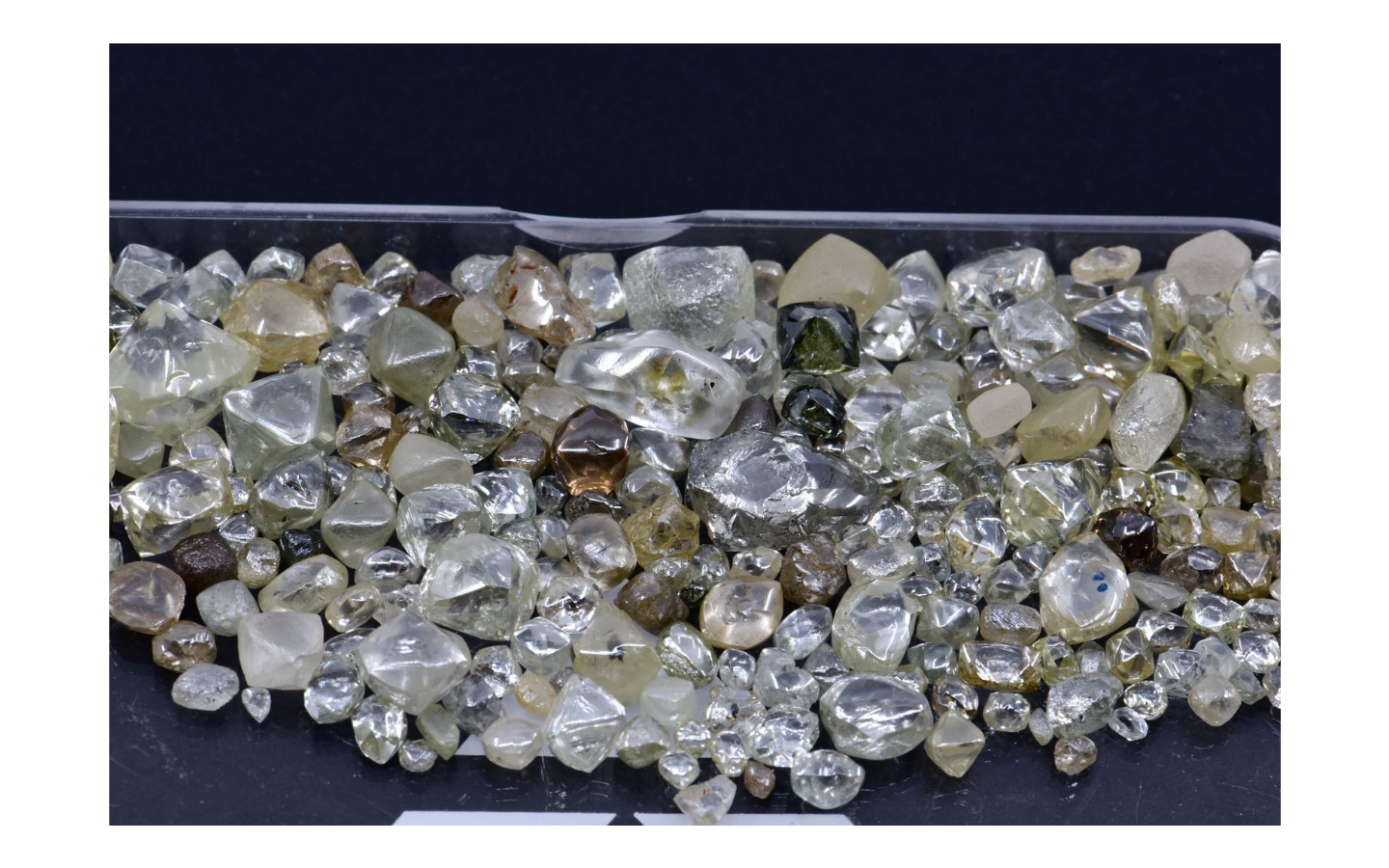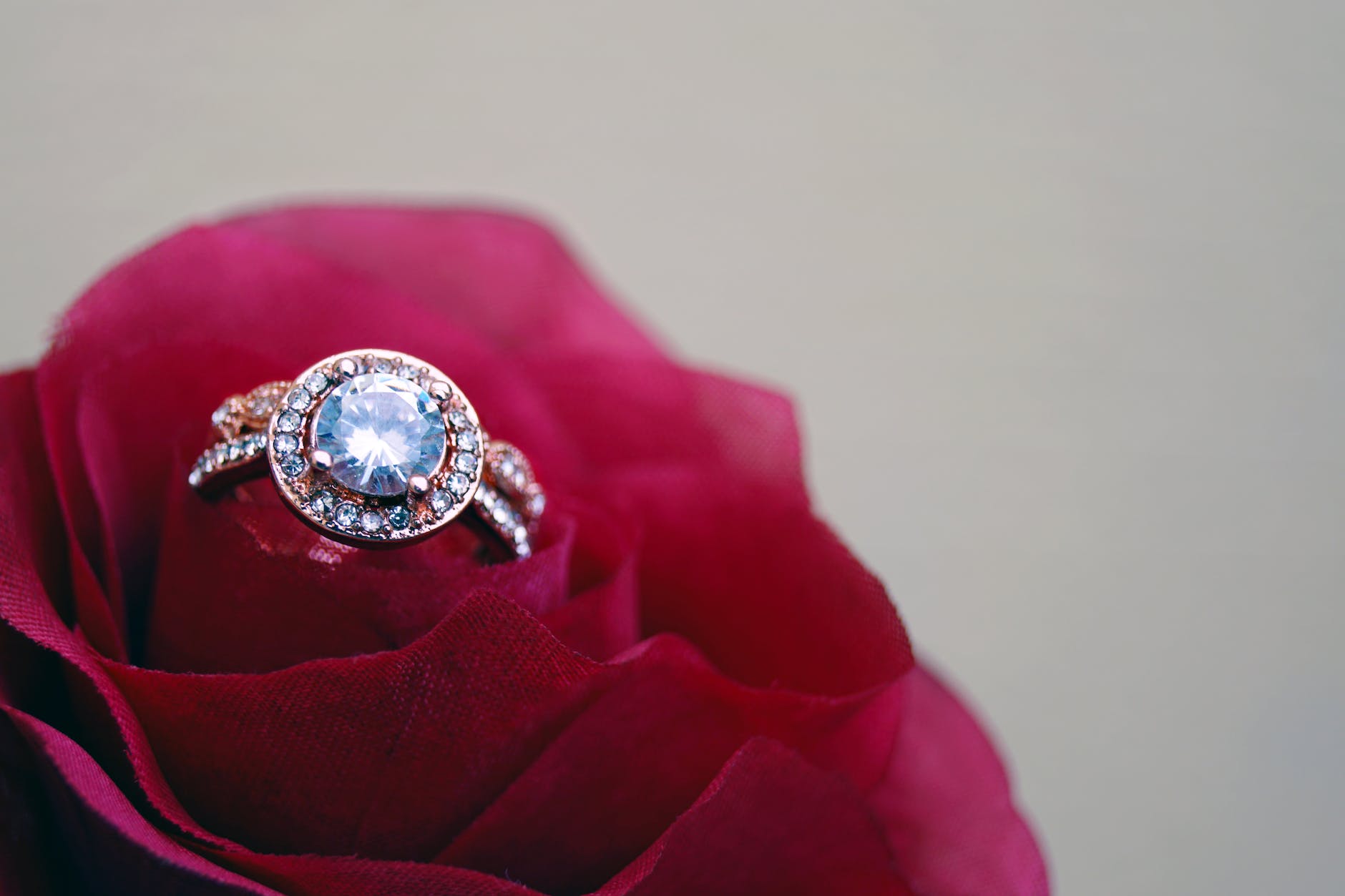I regularly receive emails asking for explanations about the regulations governing the gem trade.
The questions mainly concern the treatments they may have received and what it is compulsory to indicate when displaying a stone for the purpose of selling it. I also receive questions on the recourse in case of litigation on the exact nature of a gem or the post-sale detection of a treatment. And this is indeed a rather complicated subject.
Detail of a stand at the Mineral Expo exhibition at the Porte de Charenton in 2013 in Paris. Both treated and natural stones are clearly indicated to consumers. Photo: M. C.
In addition, two American journalists from CBS Chicago posted a report a few weeks ago about rubies treated with lead glass fillings in shops in the USA, reigniting the debate. Then there was a recall of reports for almost 500 diamonds by the GIA and finally several articles on cobalt diffusion treatment applied to spinels. To this was added a discussion between colleagues and we came to the conclusion that it was necessary to expose the state of the current French regulations. This article is therefore the result of a joint reflection and writing with gemologists and traders. I would like to thank, among others, Thierry Pradat and Didier Frediani for their proofreading, additions and pertinent comments during the writing of this post.
Let’s not forget, either, that the consumer has become more and more demanding about what he buys. And that’s great news. They want to know the exact nature of the product they are buying and whether it contains any treatments. The treatment itself is not problematic, but it is the concealment of it that poses a real ethical problem. Explanations:
- History of the legal provisions relating to the trade in gems
Several decrees and orders have successively enriched the legal arsenal concerning the denomination of stones and pearls when they are sold:
– Decree No. 50-1312 of 7 October 1950 specifically concerning the trade in objects made of tortoiseshell, ivory, amber and foam. Published in the JO 22-10-1950, it concerns the public administration regulation concerning the laws of 1 August 1905 and 21 April 1939. The 1905 law has since been codified in the Code de la Consommation in articles L. 213-1 et seq.
– Decree No. 2002-65 of 14 January 2002 on the trade in gemstones and pearls. This is the most important text for the profession and for consumers.
– Order of 1 February 1993 relating to the prohibition of the marketing and use of certain dangerous or poisonous substances and preparations and more specifically the prohibition of the use of lead salts for the manufacture of imitation pearl coatings.
- What exactly does the decree of 14 January 2002 say?
The decree, the purpose of which is to regulate the trade in gemstones and pearls, defines in Article 1 the“provisions applicable to gemstones, synthetic stones, artificial stones and imitations of gemstones, organic materials of plant or animal origin traditionally used in jewellery, fine pearls, cultured pearls and imitations of fine pearls and cultured pearls“
Its 14 articles specify what information should be given to prospective buyers of gemstones and pearls and how this should apply. It came into force on 1 February 2002.
With this decree, the terms “end“, “fine“, “precious“, “precious“, “semi-precious“, “semi-precious“, “semi-precious“etc., are repealed. We now speak of “gemstones“to characterise all stones formed in natural deposits. (Art. 1 and Art. 5)
Pearls are characterised as follows: “pearls“or “pearls“are reserved for natural secretions, without human intervention, in a wild mollusc (Art. 6). The “cultured pearls“are the result of human intervention and whose conception is artificially induced (Art. 7). The “imitation pearlimitation pearls” are pearls manufactured to copy the colour and appearance of cultured or fine pearls.
While the definition of the terms is easy enough to understand, it is more complicated to understand how the decree regulates the information that must be given to any potential buyer of a gemstone. In particular, the information relating to the treatments it may have received.
The decree is clear and stipulates that the mention “treated“(or name of the treatment: for example “irradiated topaz“or “topaz treated by irradiationthe name of the treatment (or name of the treatment: e.g. “irradiated topaz” or “topaz treated with radiation”) must be formally indicated if the stones have been treated: (Art. 2)
- by irradiation
- by laser
- by dye
- by surface diffusion
- by filling, possibly as the residue of a heat treatment, with colourless foreign matter solidified in the outer cavities which show breaks in reflection visible with a 10x magnifying glass
- by any other laboratory method that changes their appearance, colour or purity.
However, the decree also specifies that the words “treatedhowever, the decree also specifies that the mention “treated” is not compulsory when the gems, organic materials, fine pearls and cultured pearls have been subjected to traditional lapidary practices: (Art. 3)
- impregnation with a colourless fluid substance (e.g. oil )
- heat treatment if there are no heating residues in the gem or if the heating residues do not cause a break in the reflection with a 10x magnifying glass.
- bleaching without addition of product or varnish
- A decree that needs to be updated
The only concern is that traditional practices, which had no major consequences, have been improved considerably over the last twenty years and have been replaced by treatments that considerably alter the appearance of the stones. And this is where the current decree needs to be updated.
As Thierry Pradat, a gem trader, explains:“the 2002 decree is no longer precise enough and it would be necessary (in absolute terms) to indicate all treatments. Including, and especially those that have been accepted for centuries such as heating without additives or colourless oil. This is what the laboratories are already doing. Thus, if we follow this reasoning, citrines from heated amethysts (99% of citrines on sale today) should be marked as treated stones.”
This is why we advise, although the 2002 decree does not make it mandatory, to give potential customers exhaustive and precise information. For our part, any substance added to a gem and any treatment applied to modify the appearance of a stone must be declared to consumers. Laboratories already do this by specifying, for example, whether a stone contains oil. Thus, a stone “oiled” in the traditional way will see the mention “oil” noted on its certificate. A few months ago, the Laboratoire Français de Gemmologie published an article in the AFG magazine on an oiled ruby from Myanmar (Droux and Fritsch, 2014). Richard W. Hughes also recently published an article on the resurgence of oiled stones from this country. This information should, in our opinion, be given although the decree does not provide for it. But as you know, the Consumer Code (L. 111-1) obliges any trader to give any potential or actual customer all the information on the product offered for sale. This is also what theInternational Colored Gemstones Association(ICA) and theAmerican Gem Trade Association(AGTA) recommend, for example.
It is understandable that the regulations do not go that far. If we take the case of oil again, we must also bear in mind that lapidaries use oil during cutting and that it can unintentionally and randomly enter the cracks and open frosts present on the rough. So how can we be sure that the oil in the gem is the result of a voluntary action to improve the appearance of the stone? This is where the problem lies. How to dissociate involuntary impregnation from voluntary impregnation?
Another example, let’s take two rubies heated in the presence of borax (Borax is a mineral species with the gross formula Na2B4O7-10H2O. It is also called sodium tetraborate decahydrate or sodium borate hydrate), such as those famous from Mong Hsu (Myanmar). The borax will act as a flux and will penetrate strongly into the fractures of the stones. During the cooling process, rubies recrystallise in cracks of varying widths. These two stones are then cleaned with acid and the flush cavities are dissolved, which makes them rubies that do not show a reflection break under a 10x magnifying glass, and therefore, according to the law, they will not benefit from the “treated” designation in the trade (Art. 3 of Decree 2002-65). One of these rubies is cut and a filled cavity becomes flush, the stone becomes a treated ruby according to French law because this cavity will be visible with a 10x magnifying glass. While these two rubies will have had the same treatment, only one will be called a treated ruby and the other will be called a ruby with a comment about heat treatment and the presence of foreign material in the cavities and cracks. Look for the error!
This is where the powers of the regulatory authority clearly end. This point, like others, will have to be the subject of a commission made up of professionals in the trade and representatives of international jewellery bodies in order to develop French regulations. Is a national text sufficient? Not necessarily. In order to regulate the disparities between the regulations of the different countries, one could imagine a European text or even an international convention that would be ratified by the signatory countries like the Washington Convention on the rules of trade and protection of specimens of wild fauna and flora. Let’s mention, moreover, the work accomplished in this field by the World Jewellery Confederation (CIBJO) through the various Blue Books that we invite you to download if these issues concern you.
In the meantime, the consumer has the right to ask for clear information when buying a gem or a pearl, and possibly to ask for a laboratory certificate in order to have certainty before buying. In the event of subsequent disputes, he can also appeal to the General Directorate for Competition, Consumer Affairs and Fraud Control (DGCCRF) – which works in conjunction with consumer associations and has as one of its missions the control of goods sold on French territory .
We hope that this paper has given you a better understanding of how the French regulations work and what information you are entitled to request when buying gems or pearls.
See you soon.







